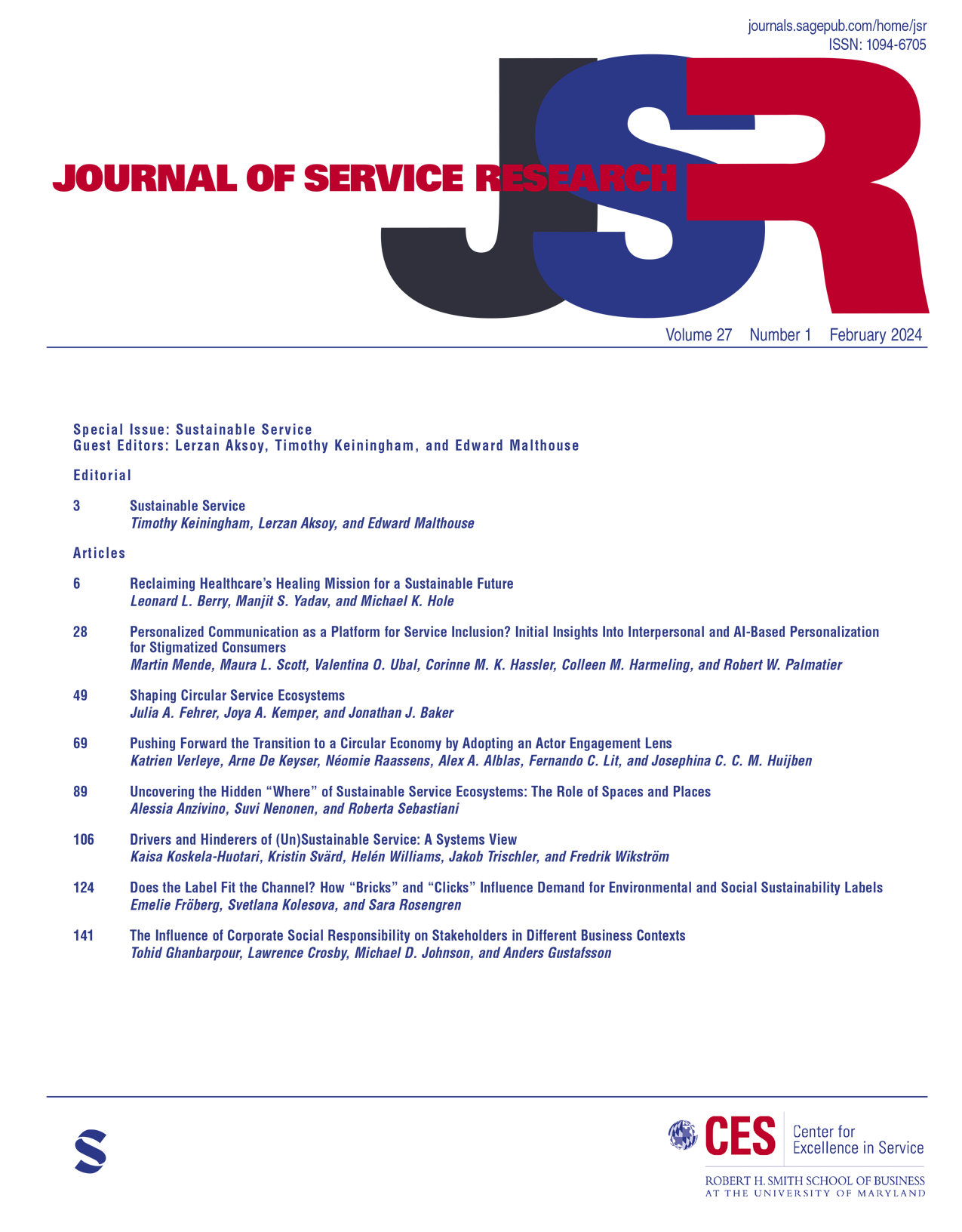AI Service and Emotion
IF 8.6
2区 管理学
Q1 BUSINESS
引用次数: 7
Abstract
AI in service can be for routine mechanical tasks, analytical thinking tasks, or empathetic feeling tasks. We provide a conceptual framework for the customer, firm, and interactional use of AI for empathetic tasks at the micro-, meso-, and macro-levels. Emotions resulting from AI service interactions can include basic emotions (e.g., joy, sadness, and fear), self-conscious emotions (e.g., pride, guilt, embarrassment), and moral emotions (e.g., contempt, righteous anger, social disgust). These emotions are mostly likely to occur during frontline interactions in which both firms and customers use AI, a phenomenon called “AI as customer.” The analysis level of AI service and emotion can be at the macro-level in which AI is transforming the service economy into a feeling economy, at the meso-level in which firms can use “thoughtful AI” to make the employees’ and customers’ lives a little bit better by brightening their days, and at the micro-level in which customers can experience basic, self-conscious, and moral emotions from interactions with service AI.AI服务与情感
人工智能可以用于日常的机械任务、分析思维任务或移情任务。我们为客户、公司和人工智能在微观、中观和宏观层面的移情任务的交互使用提供了一个概念框架。人工智能服务交互产生的情绪可以包括基本情绪(如喜悦、悲伤和恐惧)、自我意识情绪(如骄傲、内疚、尴尬)和道德情绪(如蔑视、正义的愤怒、社会厌恶)。这些情绪最可能发生在公司和客户使用人工智能的一线互动中,这种现象被称为“人工智能作为客户”。人工智能服务和情感的分析层面可以是宏观层面,即人工智能正在将服务经济转变为情感经济;中观层面,即企业可以使用“有思想的人工智能”,通过点亮他们的日子,让员工和客户的生活变得更好;微观层面,即客户可以通过与服务人工智能的互动,体验到基本的、自我意识的、道德的情感。
本文章由计算机程序翻译,如有差异,请以英文原文为准。
求助全文
约1分钟内获得全文
求助全文
来源期刊

Journal of Service Research
BUSINESS-
CiteScore
20.30
自引率
6.50%
发文量
28
期刊介绍:
The Journal of Service Research (JSR) is recognized as the foremost service research journal globally. It is an indispensable resource for staying updated on the latest advancements in service research. With its accessible and applicable approach, JSR equips readers with the essential knowledge and strategies needed to navigate an increasingly service-oriented economy. Brimming with contributions from esteemed service professionals and scholars, JSR presents a wealth of articles that offer invaluable insights from academia and industry alike.
 求助内容:
求助内容: 应助结果提醒方式:
应助结果提醒方式:


